As part of our preparations for the Around St. Martin Multihull Regatta we took a practice lap on February 22nd with Ken and Joan of CatAway aboard. This was very successful as we were able to familiarize ourselves with the coast, gauge currents, and trace a bread crumb trail on the chartplotter to refer to in the real race. The winds were 15-20 from the ENE which was the same long range forecast for the 26th, the day of the race. The only thing we didn't know yet was the exact location of the start and finish lines – which were to be someplace near our anchorage in Simpson Bay. So, except for starting and finishing, the practice lap was pretty representative of what the real race would be like.
John, Wally, and Larry arrived on the island on the 23rd, 24th, and 25th respectively. John had a car and was tremendous help with some provisioning and for taking Dave to meet Wally and Larry at the airport. Larry arrived just a couple hours before the skippers meeting held Friday evening on the 25th at a beach bar within sight of Pas de Deux at anchor.
We now had our crew. Wally and Dave have significant racing experience over many years. Larry has catamaran experience and raced his own monohull – including one regatta with Dave as crew. John was a former Catana 471 owner and knew the boat, had some racing experience on his own boat, and knew the island coast. Donna had no racing experience but is very competitive and knows the boat very well. She’s also beautiful, making up for the rest of the crew….
At the skippers’ meeting we learned there would be five boats in the "cruising class". There would also be a “racing class” made up of boats primarily intended for racing, e.g., not live- aboards, and two beach cat classes, made up of small, very fast cats typically sailed off the beach. We also learned the handicap rating of each boat in our class.
The rating is a crude calculation based on boat and sail dimensions, and especially boat weight, information we had provided to the race organizers for Pas de Deux several days earlier. Elapsed times after the race are multiplied by the rating to determine the corrected time and final finish positions. Using ratings is a common practice intended to “correct” for variations between different, but similar boats; thus, in theory, making the race an “equal” competition.
The rating values assigned indicated that there were two boats in the cruising class with higher numbers than Pas de Deux, indicating they were theoretically faster boats. One of these was a brand new Outremer 49 cruising cat named Kittycat and the other was a brand new Scape 51 day charter cat named Quality Time, which had the highest rating. We knew the race organizers had earlier considered putting Quality Time into the racing class since it’s obviously not a cruising boat. It’s built to carry 60 passengers on day sails and otherwise has little on it for cruising – like all the heavy stuff Pas de Deux has aboard. But it’s not a racing boat, either. No matter – that’s what the handicap rating is supposed to correct for and we knew the only way for QT to have more fun than us in the race would be for them to carry 60 partying passengers…. The other two boats in the cruising class with lower ratings were both trimarans – one larger and one smaller than Pas de Deux. Theoretically, anyone of us could win on corrected time.
Also at the skippers’ meeting we learned that the start would be to windward and a windward mark would be set somewhere in Simpson Bay. After rounding the windward mark leaving it to starboard (in a clockwise direction), the race course would proceed clockwise around the island with no other marks before the finish line, also to be set in Simpson Bay.
We were up early the morning of the race. Dave ferried John from shore in the dinghy (Larry and Wally were now “living” aboard) and then, in order to remove SOME weight from the boat, he locked the dinghy with our heavy deck chairs in it to a nearby moored beach cat (belonging to the race organizers). He then swam back to Pas de Deux. Other than that, the only other weight saving strategy we performed was allowing the fresh water tanks to get quite low. We also rigged the Code 0 as we expected to have conditions to use it. We chose not to use a spinnaker as cruising spinnakers are slow to rig and douse and the wind forecast was for too much wind anyway. In fact, we declared Pas de Deux to be “non-spinnaker” when providing the ratings information.
The race was scheduled to start at 1000 and the cruising class was the first of the three classes to start. We departed the anchorage around 0800 and went out for some practice as well as to watch for the race committee to set the starting line and windward mark, since these intended locations were still unknown. We put the mainsail up full, but quickly lowered it to the first reef as we determined the wind at ENE 20-25 kts to be too strong for a full main. The wind that day would prove to be a bit stronger than during our practice lap four days earlier.
For non-racers reading this, here’s a brief primer about sailing race starts. These starts are free- for-all timed starts across an imaginary line between two markers. The two markers are usually an anchored “committee boat” at the right hand end of the line and a anchored buoy at the left hand end, not too far away. The line is set perpendicular to the wind direction and boats sail upwind to cross it, which means they cross it at an angle since they can’t sail directly upwind. Typically, at 10 minutes before the start (scheduled at 0950 for this race) the officials running the race (the “race committee” located in the anchored boat) make a sound signal and raise a flag commencing a 10 minute countdown for the start. Engines aboard the racing boats have to be off by that time. The racing boats then attempt during the next ten minutes to maneuver themselves such that they arrive at the starting line at time 0 moving at full speed upwind and in favorable positions relative to other boats. This ain’t NASCAR. There are no pre-determined positions and the racing boats are free to maneuver about as they wish while honoring all right of way rules. Any speed advantages between differing boats are much less important during this phase of the race. Maneuverability, sail handling, and tactics are the keys for good starts. The boat with the slowest rating can “win” the start. In effect, it’s a race within the race.
The perfect start is usually for a boat to be on starboard tack (wind coming across the starboard side of the boat) and crossing the line exactly at time 0, or before any other boats, immediately adjacent to the committee boat at the starboard (right hand) end of the starting line. The elapsed time clock starts counting up at time 0, so any time spent being late to the line is wasted. If a boat crosses the line early – as determined by the race committee – it has to go back “below” the line and start again and has no right of way over boats yet to properly start who were not also early. Starboard tack is important because boats on starboard tack have right of way over boats on port tack. This perfect start – on starboard tack at the committee boat at time 0 or before any other boats - results in having no boats upwind, no wasted time, being on the right of way tack, and having the immediate lead in the race. It also usually results in being in a commanding position having no boats in your way when tacking onto port tack working upwind toward the windward turning mark - a skipper can pick his tack time unobstructed by other boats. Any boats close to leeward of a perfect start boat have messy wind and can’t move at full speed, and have to tack behind the leading boat to get clear wind. Any boats further behind are, well, further behind. Suffice to say, all the crews are trying to be in the same place at the same time on starboard tack for the start unless they don’t mind being immediately behind. (Other factors can come into play to vary the “perfect start” characteristics, but none of these were present for this start.)
In actuality, the pre-start maneuvers, and other things to do, begin long before the 10 minute signal and it is very much a chess match. We had completed some practice tacks and maneuvered around the committee boat waiting for the starting line to be set. When this was done we determined whether the line was “square” – perpendicular to the wind (it was) – and then watched as the windward mark was set. When it was set it was obvious that the windward leg was pretty short and pretty much directly upwind of the line, and all the other variables were such that a starboard start at the committee boat would be the best strategy. Upon gathering this intelligence, one pre-race chore was completed perfectly. At this point we had about 20 minutes to go before the expected minus 10 minute sequence start time at 0950. The 0950 sequence start time was to be at GPS 0950 (time from GPS observable on any GPS receiver) as described at the skippers meeting – but the race committee is not bound to that and race committees are notorious for being late to get organized. They can also delay the start for any reason for as long as they want. So, among other things, we had to pay attention to the committee boat as the 0950 time approached. The “official” 10 minute signal is visual – a flag being raised. The race committee would also do a courtesy countdown on VHF radio, but we couldn’t stray far at the risk of not seeing the “official” flag. We had several electronic countdown timers on the boat, not to mention GPS time, ready to actuate at the signal.
In the meantime we maneuvered the boat slowly off to starboard and upwind of the rhumb line to the committee boat. Dave’s strategy before the start of the 10 minute sequence was to both not hide our intentions of a starboard start while staying close enough that a port start was not out of the question. Far enough away, but close enough to tease our competition and be flexible. The race committee was on time and the 0950 sequence started exactly at GPS 0950. All of our timers were set successfully. Another chore completed perfectly. Kudos to the race committee for being on time.
Now, the pre-start “race” was officially on. We performed several gybes moving as slow as we could away from the committee boat keeping an eye on the other cruising class boats to attempt to gain a position that no one got to leeward of us with enough angle to force us above the committee boat. This allowed us to remain a little upwind of the starboard rhumb line to the committee boat, thus not risking needing to sail back upwind too high for the start after we gybed back towards the line. (Dave prefers all pre-start turns to be gybes vs tacks to prevent wasting time in a failed tack.) With about 4 minutes to go we gybed over to starboard back toward the line for our final pre-start maneuver, and were right where we wanted to be - a bit above the rhumb line but with time and room to come down to the rhumb line without being too early and without fouling anybody.
Kittycat and Quality Time were maneuvering themselves in predictable positions. Kittycat was well upwind and to starboard of our position – apparently maneuvering her self for a reach to the committee boat end of the line at the start. This is the oldest trick in the book and rarely works unless everybody else is late for the start. We could luff her above the committee boat if needed, as long as we weren’t too late to the line ourselves. At the opposite end of the spectrum, QT was way to leeward and further away from the line than anybody, perhaps wanting to avoid conflicts and content to make up for a late start with her superior boat speed. The two tris were close and in pretty good positions to leeward and behind us, but still above the rhumb line to the committee boat. They were the threats and could potentially do to us what we planned to do to Kittycat. Another chore completed perfectly to get on our final approach to the line in the best position.
Now it was all about boat speed – not too fast and not too slow. We played the sheets to try to match boat speed to the distance from the committee boat while converging on the rhumb line to prevent either tri from luffing us up. The tris were now more behind us and probably in our messy air, losing their speed and pointing ability. We were far enough to windward of them to prevent them from getting upwind of us and they certainly couldn’t power below us. We were maybe a bit late for the line, but no other boats were in a better position so being late was OK. As expected, Kittycat was diving toward the committee boat from way above the rhumb line and had more speed, but was too far to starboard to affect our wind and was also a bit late, giving us margin to adjust our speed and hit the line just right to luff her up. Kittycat was playing her role as we expected - trying to squeeze between us and the committee boat then round up to windward. We played the genoa in and out to adjust our speed to get to the committee boat just ahead of Kittycat to deny her room but not too soon to allow her to slip in behind us, thus forcing her to tack above the committee boat. With about 30 seconds to go we sheeted in to accelerate to top speed. Our strategy worked perfectly and Kittycat arrived at the committee boat too late to squeeze in ahead of us and too early to duck behind us. She had no choice but to tack around, then gybe to cross the line behind everybody else. We crossed the line first a few feet from the committee boat about 10 seconds late at top speed. A perfect start for us. That was the best part….
Soon after the start Dave announced to the crew to prepare to tack as he expected to do this within a couple minutes. Due to miscommunication, this was interpreted as “tack” and the genoa sheet was released far prematurely and the boat slowed to a crawl. Dave at the helm on the opposite side of the boat initially interpreted the luffing genoa as a header and bore away – in the opposite direction of a tack - in an attempt to maintain boat speed. When he finally figured out what really happened it took a couple minutes to recover, but by then all the other boats in our start passed us and we were the last to the windward mark. Oh well, it’s a long race. After rounding the windward mark we bore away and were not that far behind the other boats and the rest of the race was on.
The next leg of the race was a very broad reach to the west tip of the island and we unrolled the Code 0 and furled the genoa. The other boats made similar sail changes. We crept up on the two tris but both Kittycat and QT were pulling away from us. Our goal now was to keep up with them as best we could and hope our corrected time would be good enough. But at the same time we needed to pass and get pretty far ahead of the slower tris to prevent their corrected times from being good enough for them! At this point, as the boats became more spread out, the importance of close-in tactics as during the start became less important and sailing the boat as fast as we could was our focus – and not making any more mistakes. But the next mistake came soon enough…
As we approached the west tip of the island we needed to furl the Code 0 and switch back to the genoa as the next leg up the NW side of the island and through the Anguilla channel would be all upwind. Dave waited a bit too long to start this sail change and we ended up trying to furl the Code 0 with too much upwind pressure on it. At these high wind speeds its furls best while still off the wind. We had a lot of trouble furling it and had to steer the boat downwind off our course to get it rolled up and even then it didn’t roll up properly and needed to be taken down. Dave and Wally went forward to accomplish this and got it on deck and stuffed it in the starboard sail locker to be sorted out later. After getting settled into our upwind course we could see Kittycat still within reach right in front of us but QT was out of sight. The two tris were to leeward of us, apparently not pointing as high.
Tactician Wally estimated we were actually catching up with Kittycat a bit and sailing a little higher. This was confirmed on AIS as she was transmitting, so we knew her speed and course. For sure she was watching us on AIS as well. This was good news as it meant if we could pace her upwind in the Anguilla channel to the NE tip of the island we stood a good chance of staying within our corrected time margin. We knew she was quite a bit faster off the wind and would pull away after rounding the NE tip.
Within a short time chasing Kittycat, she tacked onto port back towards St. Martin. This was unexpected and she also had trouble completing her tack – standing motionless for awhile, apparently in irons. This allowed us to really close in on her and by the time she got going again on port tack we had almost caught up with her. With this early tack she would certainly need to be performing more tacks than us up the Anguilla channel as we planned to go all the way to Anguilla before tacking back to St. Martin. This is what we did on our practice lap and we needed only three tacks total to reach the NE tip of St. Martin. Short tacking up the coast of St. Martin seemed to be a poor strategic decision. Every tack takes a lot of time even if they’re done properly. And if the slow tack we observed her perform was typical, we should easily catch and pass her on this upwind leg. Our track was closely following our practice lap track and we kept to our plan to minimize tacks.
We reached Anguilla and tacked over to port back to St. Martin at about the same spot as during our practice lap. We could see Kittycat on AIS and our boat speeds were similar. We’d know soon enough if we’d made up distance on her as we crossed tacks. She crossed our bows in a while further ahead than we expected and we began to wonder if short tacking up the coast of St. Martin had some benefit we didn’t recognize. We weren’t detecting significant adverse current out in the Anguilla channel. Nonetheless, we stayed with our strategy as the rest of the upwind leg for us was essentially two more short tacks and we estimated we were still within our time margin to beat Kittycat on corrected time. Still QT and the two tris were no where in sight. We suspected QT to be ahead of us and the two tris to be behind – all the boats in our class in order of our respective ratings.
We ended up completing our three tacks in Anguilla channel without errors and reached the NE tip almost exactly following our practice lap track, and began the reach down the east side of St. Martin. Pretty soon we were far enough off the wind that we would have switched headsails to the Code 0 if it was still rigged. Dave chose not to try to re-rig it as he was afraid of damaging it. Sorting it out was best done in more relaxed conditions. But we did shake the reef out of the main to give us a little more speed. But not having the benefit of the Code 0 certainly limited our boat speed off the wind.
The rest of the race was less intense as we were well off the wind. We even had a few moments to watch and take pictures of a couple super fast beach cats blasting past us (their start was after our). We could also see Kittycat increasing her lead and at one point saw her AIS speed at 16 kts. We were topping out around 10 kts. Approaching Simpson Bay we located the finish line and made our best speed to the committee boat end of the line as this was the closest point. We crossed the finish at just under 4 hours elapsed time and apparently made the race committee a bit nervous as we passed pretty close to the committee boat. We suspected we finished third so far on corrected time, but the two tris were still racing and could still beat us.
After re-anchoring and retrieving the dinghy we all relaxed a bit and prepared to go ashore to the same beach bar where the skippers’ meeting was held the evening before to attend the post race festivities, scheduled to begin at 1700. In the meantime we watched as the first tri to arrive had difficulty with one of its sails and didn’t appear to cross the finish line. It looked like it finally gave up and motored into the anchorage. The second and smaller tri finished a short time later and we estimated its corrected time would be very close to ours. They may have taken third instead of us.
At the awards party we met and mingled with the crew of Kittycat and exchanged stories. They were real cruisers and very nice folks. We also chatted a bit with race organizer Mirian who described our start as “awesome”. She also added that we scared them a bit on the committee boat. Dave asked, “At the start or finish?” “Yes!” she responded.
Finally the awards were given and we indeed finished third on corrected time. The small trimaran was only a couple minutes behind on corrected time. As we expected QT was first and Kittycat was a close second.
We received a 3rd Place Certificate, a $20 bar credit (that was promptly used), and a $50 gift certificate to Budget Marine. During the awards presentation Mirian again gushed about our exciting start and described it as the best of the day, opining that she felt it may have cost Kittycat a first-place finish. All in all we had a terrific time, thanks to the help of Wally, Larry, and John. Of course, we claimed to have finished first in the unofficial Fun category….
Twice Around the Island – The Big Race
Tuesday, February 22, 2011
 Simpson Bay, Saint Martin
Simpson Bay, Saint Martin
Other Entries
-
139Sail to the Pitons, St Lucia
Dec 2856 days prior Soufrière, Saint Luciaphoto_camera7videocam 3comment 0
Soufrière, Saint Luciaphoto_camera7videocam 3comment 0 -
140Southward to St Vincent and The Grenadines
Jan 0152 days prior Bequia, Grenadines/St Vincentphoto_camera8videocam 0comment 0
Bequia, Grenadines/St Vincentphoto_camera8videocam 0comment 0 -
141Southbound to Canouan
Jan 0449 days prior Canouan, Grenadines/St Vincentphoto_camera8videocam 0comment 0
Canouan, Grenadines/St Vincentphoto_camera8videocam 0comment 0 -
142Snorkeling at The Tobago Cays
Jan 0746 days prior Tobago Cay, Grenadines/St Vincentphoto_camera15videocam 6comment 0
Tobago Cay, Grenadines/St Vincentphoto_camera15videocam 6comment 0 -
143Sailing Onward Toward Grenada
Jan 1241 days prior St. George's, Grenadaphoto_camera10videocam 1comment 0
St. George's, Grenadaphoto_camera10videocam 1comment 0 -
144Exploring Grenada
Jan 1835 days prior St. George's, Grenadaphoto_camera14videocam 0comment 0
St. George's, Grenadaphoto_camera14videocam 0comment 0 -
145The Beginning of our Route Northward
Jan 2429 days prior Mustique, Grenadines/St Vincentphoto_camera12videocam 1comment 0
Mustique, Grenadines/St Vincentphoto_camera12videocam 1comment 0 -
146There's nothing jolly about Christmas Winds
Jan 2528 days prior Mustique, Grenadines/St Vincentphoto_camera0videocam 0comment 0
Mustique, Grenadines/St Vincentphoto_camera0videocam 0comment 0 -
147Exclusive Mustique
Jan 2627 days prior Mustique, Grenadines/St Vincentphoto_camera10videocam 0comment 0
Mustique, Grenadines/St Vincentphoto_camera10videocam 0comment 0 -
148Bequia, part Deux
Jan 2726 days prior Bequia, Grenadines/St Vincentphoto_camera4videocam 0comment 0
Bequia, Grenadines/St Vincentphoto_camera4videocam 0comment 0 -
149A Shore Thing – St Vincent to St Lucia
Jan 2924 days prior Marigot Bay, Saint Luciaphoto_camera3videocam 0comment 0
Marigot Bay, Saint Luciaphoto_camera3videocam 0comment 0 -
150St Lucia to Dominica
Jan 3023 days prior Portsmouth, Dominicaphoto_camera1videocam 0comment 0
Portsmouth, Dominicaphoto_camera1videocam 0comment 0 -
151The Sounds of Parrots Squawking
Feb 0121 days prior Portsmouth, Dominicaphoto_camera2videocam 0comment 0
Portsmouth, Dominicaphoto_camera2videocam 0comment 0 -
152Onward to Guadeloupe and Antigua
Feb 0418 days prior English Harbour, Antigua and Barbudaphoto_camera15videocam 0comment 0
English Harbour, Antigua and Barbudaphoto_camera15videocam 0comment 0 -
153Could anyplace be more gorgeous than Barbuda?
Feb 1111 days prior Codrington, Antigua and Barbudaphoto_camera16videocam 1comment 0
Codrington, Antigua and Barbudaphoto_camera16videocam 1comment 0 -
154St. Barth’s
Feb 139 days priorGustaviaphoto_camera5videocam 0comment 0 -
155Two for the high price of one – Sint Maarten
Feb 157 days prior Simpson Bay, Saint Martinphoto_camera5videocam 0comment 0
Simpson Bay, Saint Martinphoto_camera5videocam 0comment 0 -
156Twice Around the Island – The Big Race
Feb 22 Simpson Bay, Saint Martinphoto_camera10videocam 0comment 0
Simpson Bay, Saint Martinphoto_camera10videocam 0comment 0 -
157The Morning After the Night Before
Feb 275 days later Simpson Bay, Saint Martinphoto_camera4videocam 0comment 0
Simpson Bay, Saint Martinphoto_camera4videocam 0comment 0 -
158Next stop – Virgin Gorda, BVI
Feb 286 days later North Sound, Virgin Islands Britishphoto_camera18videocam 0comment 0
North Sound, Virgin Islands Britishphoto_camera18videocam 0comment 0 -
159Touring BVI with Wally and Larry
Mar 039 days later Anegada, Virgin Islands Britishphoto_camera31videocam 0comment 0
Anegada, Virgin Islands Britishphoto_camera31videocam 0comment 0 -
160Return to North Gorda Sound
Mar 0612 days later Trellis Bay, Virgin Islands Britishphoto_camera1videocam 0comment 0
Trellis Bay, Virgin Islands Britishphoto_camera1videocam 0comment 0 -
161It Ain’t All Rum and Mangoes
Mar 2228 days later Soper's Hole, Virgin Islands USphoto_camera1videocam 0comment 0
Soper's Hole, Virgin Islands USphoto_camera1videocam 0comment 0 -
162National Park Highlights on St John, USVI
Mar 2329 days later Caneel Bay, Virgin Islands USphoto_camera1videocam 0comment 0
Caneel Bay, Virgin Islands USphoto_camera1videocam 0comment 0 -
163The Definition of Cruising
Apr 0340 days later Charlotte Amalie, Virgin Islands USphoto_camera1videocam 0comment 0
Charlotte Amalie, Virgin Islands USphoto_camera1videocam 0comment 0 -
164Another Group of Virgins
Apr 2360 days later Cayo de Luis Pena, Puerto Ricophoto_camera20videocam 1comment 0
Cayo de Luis Pena, Puerto Ricophoto_camera20videocam 1comment 0 -
165Passage to the Turks and Caicos Islands
Apr 2764 days later French Cay, Turks and Caicosphoto_camera12videocam 1comment 0
French Cay, Turks and Caicosphoto_camera12videocam 1comment 0 -
166Overnight Passage to the Bahamas
May 0168 days later Salina Point, Bahamasphoto_camera8videocam 2comment 0
Salina Point, Bahamasphoto_camera8videocam 2comment 0 -
167Passage Through the Jumentos and Hog Cay Cut
May 0572 days later Hog Cay Cut, Bahamasphoto_camera5videocam 0comment 0
Hog Cay Cut, Bahamasphoto_camera5videocam 0comment 0 -
168Transiting from the Exuma Sound to the Exuma Bank
May 0976 days later Highborne Cay, Bahamasphoto_camera17videocam 2comment 0
Highborne Cay, Bahamasphoto_camera17videocam 2comment 0 -
169Northward to the Berry Islands
May 1683 days later Great Harbour Cay, Bahamasphoto_camera7videocam 0comment 0
Great Harbour Cay, Bahamasphoto_camera7videocam 0comment 0 -
170To Sail or Not to Sail
May 2390 days later Palm Beach, United Statesphoto_camera3videocam 0comment 0
Palm Beach, United Statesphoto_camera3videocam 0comment 0 -
171Homeward Bound
May 3097 days later Willoughby Harbor Marina, United Statesphoto_camera8videocam 0comment 0
Willoughby Harbor Marina, United Statesphoto_camera8videocam 0comment 0 -
172Hobie Fleet 32 Day Sail
Jul 03131 days later Willoughby Harbor Marina, United Statesphoto_camera11videocam 0comment 0
Willoughby Harbor Marina, United Statesphoto_camera11videocam 0comment 0 -
1732011 Summer Maintenance
Nov 01252 days later Reedville, United Statesphoto_camera10videocam 0comment 0
Reedville, United Statesphoto_camera10videocam 0comment 0 -
174Preparations for 2011 Passage to Eastern Caribbean
Nov 10261 days later Reedville, United Statesphoto_camera4videocam 0comment 0
Reedville, United Statesphoto_camera4videocam 0comment 0

 Simpson Bay, Saint Martin
Simpson Bay, Saint Martin
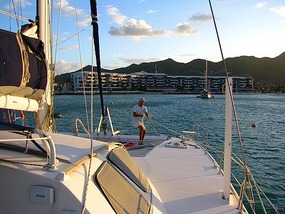
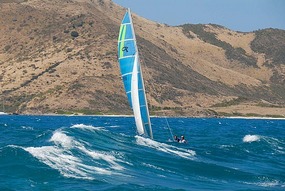
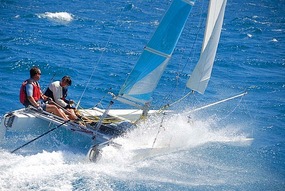
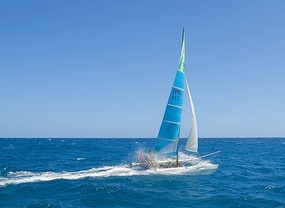
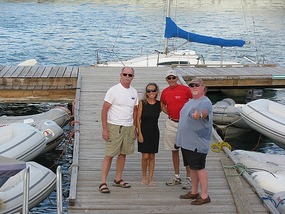
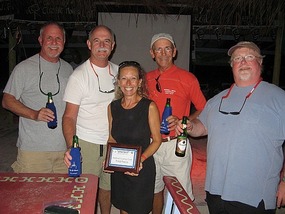
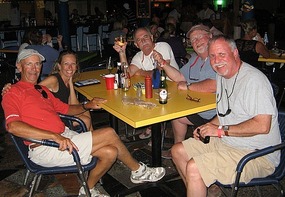












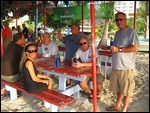
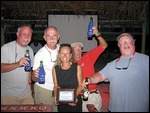
2025-05-23